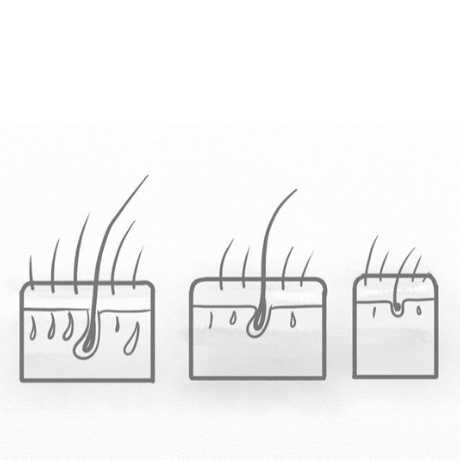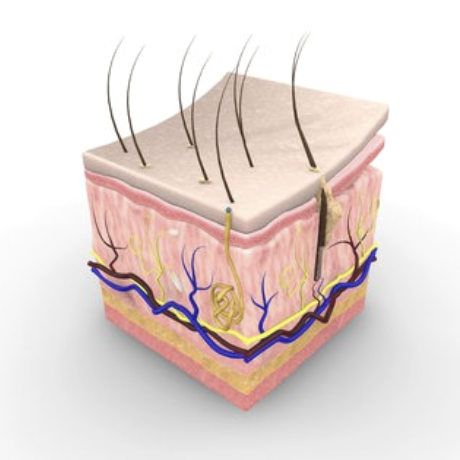Understanding the three phases of hair growth
Keeping an eye on how much hair you are losing is always a good idea. The fact is we are losing hair all the time – this is quite natural – it is when the hair does not regrow or the loss of hair is in excess that there is a problem and warrants a discussion with your GP or your hairdresser.
So why do we continue to lose hair all the time and why is hair loss on our heads different to our bodies? And why do some people lose more hair than others?
It’s all in the genes
Our genes define what is going to happen to our hair. They will certainly determine whether you are likely to suffer from male pattern baldness or not. But more importantly they determine how much your head hair will grow. When it has reached its maximum length it will stop growing.
Body hair (hair on arms, legs and abdomen etc.) is regulated in the same way but the maximum hair length is a great deal less. Scientists believe that body hair grows less than head hair because the latter still provides a protective function. The scalp is continually open to the elements (Sun, rain etc.) so it is important that the hair protects it as much as possible.
In both body hair and head hair a rejuvenation period takes place where at certain times (again regulated largely by the genes) you will lose hair naturally. Your hair will go through three phases of hair growth:
- The Anagen Phase
- The Catagen Phase
- The Telogen Phase
Anagen Phase
It is during this phase that your hair is growing within the hair follicle. How long your hair will grow will depend on how long your genes have determined your unique anagen phase to be. It will grow about half an inch a month.
Catagen Phase
In the second phase the body signals to the hair follicle that its work is over for the moment and the hair stops growing.
Telogen Phase
In the telogen phase the hair follicle rests. The hair follicle shrinks and pushes the hair up and out. The hair is lost. This is the natural way in which we lose hairs all of the time. The hair is also pushed out by the beginnings of the new anagen phase as the new hair begins to grow at the base of the follicle.
So you are losing hair all the time, your genes regulate which hairs you will lose by processing the three phases, your hair does have a maximum hair growth and the anagen phase for head hair is much longer than body hair – which is why body hair never grows long.
Scalp Micropigmentation is a non-surgical hair loss solution that can give you your freedom back. By choosing to opt for a shaved head look, you no longer have to hide or style your hair. The shaved head look is effortless, timeless and smart. Learn more about scalp micro pigmentation the hairline tattoo that can recreate a full head of shaved hair.
Skalp have clinics around the world. We have clinics in New York, Los Angeles, London, Manchester, Edinburgh and Dublin.
Book an appointment for a complimentary consultation today
Top Related Posts:
Breakthrough in Research To Find A Cure For Male Pattern Baldness
Famous Bald Footballers – Shaved, Suited And Booted!
Receding Hairline In Your 20’s? 4 Hair Loss Solutions To Consider
Do Protein Shakes Cause Hair Loss?


